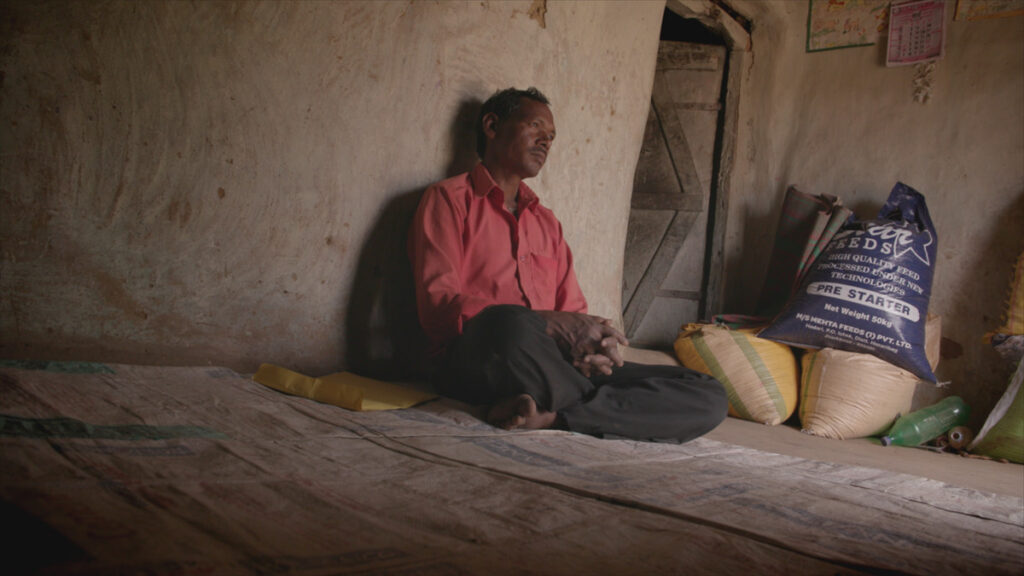To Kill A Tiger (2022), the Oscar nominated documentary directed by Nisha Pahuja, is now streaming on Netflix. The film follows the journey of a farmer in rural Jharkhand, Ranjit, as he fights to get justice for his 13-year-old daughter, Kiran (name changed), the surviver of a gruesome sexual assault by three men of the same village.
From the onset of the film, it is near impossible to prevent oneself from getting caught up in the emotional density of such a grim and horrific incident. Pahuja does extremely well to ensure that the narrative remains as balanced as can be, listening to the perspectives of all those involved (excepting the accused) without muddling any facts. Through this pragmatic approach, she explores the functioning of the judicial/law enforcement systems and the rural intra-community dynamics.
Community living, as a concept, is adhered to far more seriously in rural settlements as opposed to urban areas. Trivial and personal domestic issues take centre stage during casual village discussions – everyone has an opinion and is ready to give unsolicited advice. Complex social structures like the caste system are stringently followed with strong patriarchal hierarchies that are unfortunately respected. Often, preposterous compromises (a word used extensively throughout the film) are made by victims of abuse and their families with the perpetrators to maintain pseudo-harmony in the village. Such is the compromise suggested in Kiran’s village as well. That she gets married to one of her attackers. Even the womenfolk in the village attribute the occurrence of the incident to Kiran’s weakness, and not the nauseating conduct of the accused.
On first glance, Ranjit seems an unlikely hero as he initially comes across as a diffident individual who is intimidated by people in positions of authority. There is something about him however, that makes him stronger, tougher and more resilient when he is pushed into a corner. Deep down, he knows that he is doing the right thing and that there is no reason for him and his daughter to feel ashamed. Ranjit takes on the entire village – who request (and even threaten) him to deal with the matter internally. To her credit, Pahuja never glorifies him – she honestly shows Ranjit having his moments of self-doubt, as he ponders on whether he really has the strength to give his daughter a better life. Seeing Kiran stand up for herself gives more confidence to Ranjit to fight which in turn gives Kiran solace as well. Through no fault of her own, she must undergo this trauma and ordeal to punish her rapists. Justice is essential, but merely one of the steps in her lifelong process to heal. It is heartwarming to see father and daughter empower one another to see that justice is that. Mention here also has to be made of Kiran’s mother who stands steadfastly by her daughter.
At the other end of the spectrum, we have the Ward Officer trying his best to maintain harmony within a divided community. There is a strong contradiction and complexity to his personality – he knows what happened is abominable and unfortunate, but he also believes that an internal compromise is the best recourse. To him, no matter what the verdict, it is his village that now carries an infamous reputation for perpetuity. What’s more, the victim and the accused are all children from his village.
Kiran’s interview, while highlighting her bravery and determination to get justice, is where To Kill A Tiger runs into murky territory. One objection against documentary filmmakers has always been their abuse of power to make choices on behalf of the artist/protagonist that might not be in their best interests but instead, serve the narrative or agenda that the makers want to put forth. According to a Senior Advocate at the Supreme Court of India, filming the rape survivor when she was a minor and using that footage without blurring her face is a violation against The POSCO Act of 2012. On her part, Pahuja says that the film was released only once Kiran turned 18. And that only after Kiran saw what Pahuja had filmed with her did she give her the go-ahead to reveal her physical identity. I have to add here that if Kiran’s decision to reveal herself and Pahuja’s compliance was aimed to serve as inspiration and empower other survivors whilst also changing the outlook of male viewers, then it wholeheartedly accomplishes these objectives. At the same time, one sincerely hopes that Pahuja and her team made Kiran fully aware of all the consequences of her decision. Especially with the case now in the High Court as the accused have appealed against their 25 year jail sentence.
The cinematography (Mrinal Desai) is accomplished without ever intruding into the film’s narrative. The sound design is clean, intricate and has a cohesive flow, However, the overall runtime of the film does feel slightly stretched while the background score, unable to get out of its ‘foreign gaze’ mode, is a let down.
Finally, just as Ranjit takes on a proverbial tiger – a community and a powerful, complex system – and comes out the victor, Nisha Pahuja too takes on the massive responsibility of creating a film that hopes to alter paradigms – especially that of males – to bring about crucial change. And that is the film’s biggest strength.
Hindi, Documentary, Color


